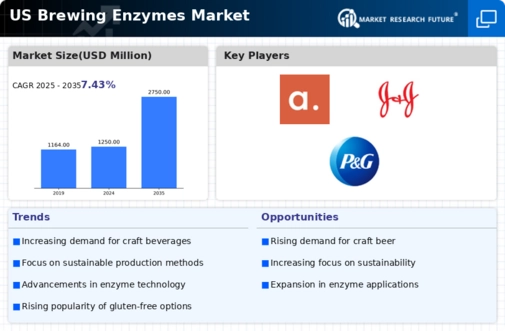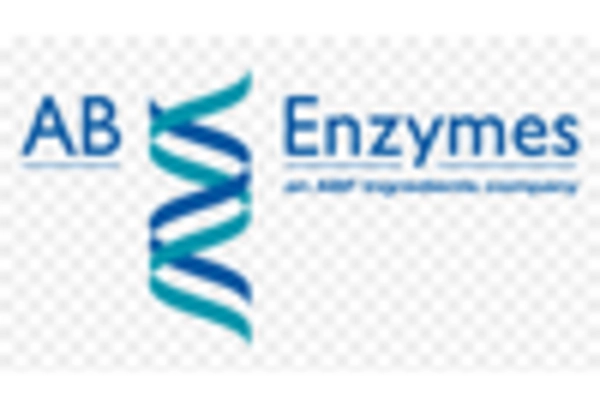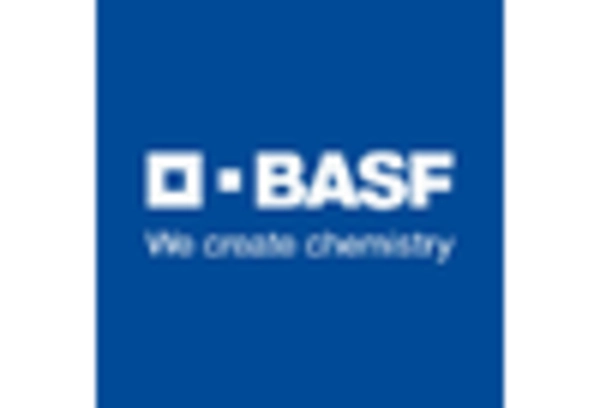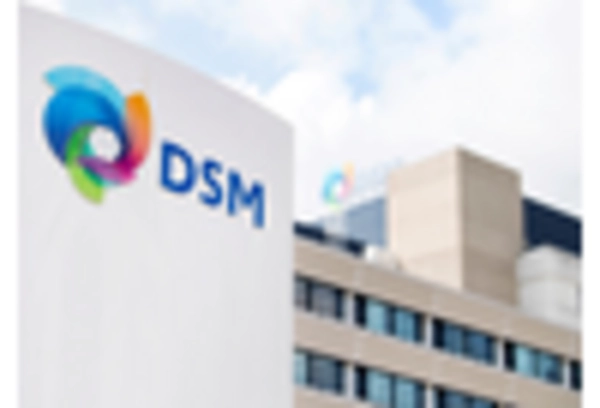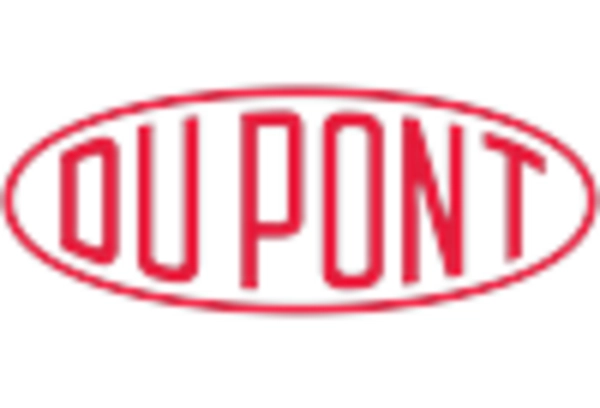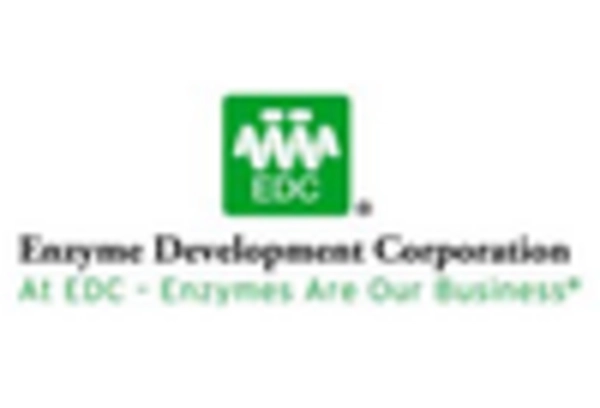Growth of the Organic Beer Segment
The organic beer segment is witnessing substantial growth within the US Brewing Enzymes Market, driven by increasing consumer awareness regarding health and sustainability. Organic beers often require specific enzymes to maintain quality and flavor without the use of synthetic additives. The market for organic beer is projected to grow at a CAGR of around 8% over the next few years, indicating a robust demand for enzymes that can support organic brewing processes. This trend is prompting brewers to invest in enzyme technologies that align with organic certification standards, thereby enhancing the overall market for brewing enzymes in the United States.
Increasing Demand for Gluten-Free Products
The rising consumer demand for gluten-free products is significantly influencing the US Brewing Enzymes Market. With an estimated 3 million Americans diagnosed with celiac disease, there is a growing need for gluten-free beer options. Enzymes such as glucanases and proteases are essential in the production of gluten-free beers, as they help break down gluten proteins, ensuring a palatable product for consumers with dietary restrictions. This trend is expected to propel the market, as brewers increasingly incorporate these enzymes to cater to health-conscious consumers. The gluten-free beer segment is projected to account for a substantial share of the overall beer market, further emphasizing the importance of enzymes in the US Brewing Enzymes Market.
Emergence of New Brewing Styles and Flavors
The emergence of new brewing styles and flavors is reshaping the landscape of the US Brewing Enzymes Market. As craft breweries continue to innovate, there is a growing need for specialized enzymes that can facilitate the production of unique beer styles, such as sour ales and barrel-aged beers. These enzymes play a crucial role in developing complex flavors and aromas, which are increasingly sought after by consumers. The craft beer segment is expected to maintain a strong growth trajectory, with many breweries experimenting with unconventional ingredients and brewing techniques. This trend is likely to drive demand for diverse enzyme applications, further propelling the US Brewing Enzymes Market.
Technological Advancements in Brewing Enzymes
The US Brewing Enzymes Market is experiencing a notable transformation due to rapid technological advancements. Innovations in enzyme production and application are enhancing the efficiency of brewing processes. For instance, the introduction of new enzyme formulations allows brewers to optimize fermentation and improve flavor profiles. This is particularly relevant as the market is projected to grow at a CAGR of approximately 6% from 2023 to 2028. Furthermore, advancements in enzyme stability and activity under various brewing conditions are enabling brewers to achieve consistent quality in their products. As a result, the adoption of these technologies is likely to drive growth in the US Brewing Enzymes Market, as brewers seek to differentiate their offerings in a competitive landscape.
Regulatory Support for Innovative Brewing Practices
Regulatory frameworks in the United States are increasingly supportive of innovative brewing practices, which is beneficial for the US Brewing Enzymes Market. The Alcohol and Tobacco Tax and Trade Bureau (TTB) has established guidelines that encourage the use of enzymes in brewing, recognizing their role in enhancing product quality and efficiency. This regulatory support is likely to foster an environment conducive to research and development, allowing brewers to experiment with new enzyme applications. As a result, the market for brewing enzymes is expected to expand, as more breweries adopt these practices to improve their production processes and meet consumer expectations for quality and variety.


